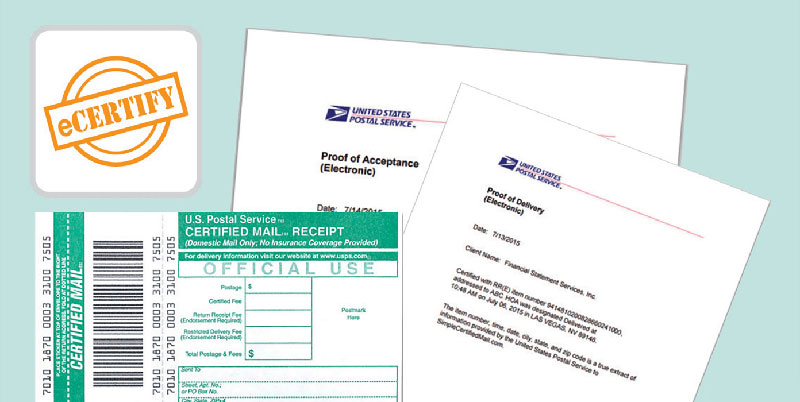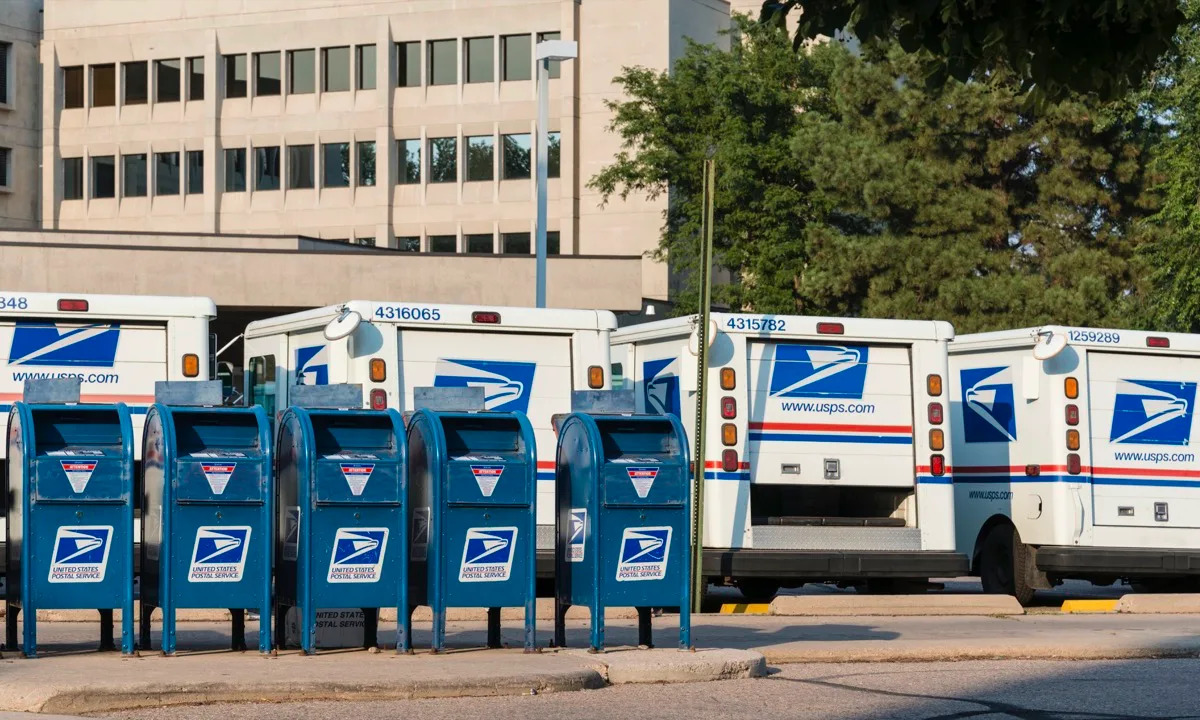So you need to send an important letter or package and want to make sure it gets where it’s going. The US Postal Service offers two options for secure delivery with tracking: certified mail and registered mail. But which service is right for you? Certified mail is probably your best bet for most items. It provides electronic tracking and delivery confirmation for a reasonable price. Registered mail is more expensive but also more secure, with additional insurance coverage and tighter handling procedures. It really depends on how valuable your item is and how worried you are about it getting lost or damaged along the way. Read on to learn the key differences between certified mail and registered mail so you can choose the USPS service that fits your needs.
Table of Contents
- What Is Certified Mail?
- What Is Registered Mail?
- The Key Differences Between Certified Mail and Registered Mail
- How Often Are Certified Mail and Registered Mail Used?
- When to Use Certified Mail vs Registered Mail
- How to Send Certified Mail
- How to Send Registered Mail
- Certified Mail and Registered Mail Costs
- Tracking Certified Mail and Registered Mail
- Certified Mail vs Registered Mail FAQ
- Conclusion
What Is Certified Mail?
So what exactly is Certified Mail? It’s a USPS service where your mail is tracked to verify delivery. When you send something Certified Mail, the recipient has to sign for it to confirm they received the item. This gives you peace of mind that your important documents, cards or letters were delivered.
To use Certified Mail, you need to buy the proper postage and Certified Mail labels or stamps at your local post office or on the USPS website. Certified Mail labels come in a few forms:
- Certified Mail (green label): For domestic mail only. No insurance coverage.
- Certified Mail with Return Receipt (green and white label): For domestic mail. Includes record of delivery with recipient’s signature.
- Certified Mail with Electronic Return Receipt (green label with barcode): For domestic mail. Provides email notification with record of delivery and recipient’s signature.

Once you’ve paid for postage and the Certified Mail label, affix the label to your envelope or package. Drop it in a blue collection box, at your local PO, or schedule a free carrier pickup. Your item will be tracked during transit and the recipient’s signature is captured upon delivery. You’ll receive the signed receipt by mail in a few days.
Certified Mail is a secure and budget-friendly option if you need proof of delivery for important documents or packages within the US. For international mail or shipments over $500 in value, Registered Mail is a better choice as it includes coverage for loss or damage. But for most everyday correspondence, Certified Mail gives you peace of mind without the extra cost.
What Is Registered Mail?
Registered Mail is for sending valuable or important items through USPS. It provides more security than regular mail or even Certified Mail. With Registered Mail, your item is closely tracked from pickup to delivery, with limited handling and strict accountability at each step.
To send something Registered Mail, you’ll pay a registration fee in addition to postage. The registration fee covers the extra care and handling. Once you drop off your item at the post office, it’s logged into the USPS system and a record of acceptance is created. Your package is then transported in locked containers to prevent any tampering.
Upon delivery, the recipient must sign for the item to prove they received it. This signature is captured electronically and linked to the tracking record for your shipment. So you’ll know exactly who signed for your letter or package and when.

Registered Mail also includes up to $50,000 of insurance coverage in case anything is lost or damaged. So you can rest assured your valuable documents, gifts or other important items will be closely monitored and securely delivered to the intended recipient.
The extra security and insurance that comes with Registered Mail does mean it tends to cost more than regular postage or even Certified Mail. But when you need to send something truly important, the additional fees are worth the peace of mind. Registered Mail is really the only way to go if you need the strongest protection USPS offers for your mail.
The Key Differences Between Certified Mail and Registered Mail
When sending important mail, the USPS offers two similar but distinct services: Certified Mail and Registered Mail. While both provide tracking and delivery confirmation, there are some key differences to consider when choosing which is right for your needs.
Tracking and Insurance
Certified Mail provides electronic tracking and delivery confirmation, so you’ll know when your item is delivered or if delivery was attempted. Registered Mail offers the highest level of tracking with details on every location your item passes through. Registered Mail also includes up to $50,000 of insurance in case the contents are damaged or lost. Certified Mail does not include any insurance coverage.
Signature Required
Both Certified Mail and Registered Mail require a signature upon delivery to ensure your item ends up in the right hands. The main difference is that with Certified Mail, an electronic signature is captured, while Registered Mail requires a handwritten signature which provides an extra layer of security.
Transit Time
Registered Mail may take 1-2 days longer than Certified Mail to be delivered since it undergoes additional processing and security checks during transit. So if speed is a concern, Certified Mail is likely your best option.
Cost
Certified Mail tends to be more budget-friendly, currently starting around $5.30, while Registered Mail has a higher fee, around $19.70 and up, due to the additional services and coverage it provides.
In summary, if you need basic tracking and confirmation of delivery for an important letter or package, Certified Mail should work great and save you a few dollars. However, for highly valuable or irreplaceable items, the extra security and insurance that comes with Registered Mail is worth the additional cost. Either way, you can rest assured your important mail will be handled with the utmost care.
How Often Are Certified Mail and Registered Mail Used?
When it comes to popularity, Certified Mail is the clear favorite among USPS customers. In the most recent year, fewer than one million items were sent using Registered Mail, making it a relatively rare choice. Meanwhile, Certified Mail saw a staggering 158 million pieces sent during the same timeframe. Of those, over 100 million were sent with signed Return Receipts for an added layer of delivery confirmation.
This difference in usage just goes to show that while Registered Mail is reserved for those rare, ultra-important shipments, Certified Mail has become the go-to option for everyday legal documents, important notifications, and other critical correspondences.
When to Use Certified Mail vs Registered Mail
So you have an important letter or package to send and want to make sure it reaches its destination. The USPS offers two similar but distinct services for this: Certified Mail and Registered Mail. How do you decide which one is right for your needs?
Use Certified Mail for Domestic Shipping
Certified Mail is best for sending important documents or packages within the U.S. It provides delivery confirmation and a record of the contents. Your item is tracked during transit so you know when it’s delivered or if there are any issues. Certified Mail is more affordable but still gives you peace of mind for sensitive domestic shipments.
Choose Registered Mail for High-Value or International Items
Registered Mail offers more comprehensive coverage for valuable or irreplaceable items. It provides maximum security through locked containers and numbered receipts during transit. Registered Mail is recommended when sending items overseas or shipping high-value goods like jewellery, antiques or legal documents. The additional safeguards and insurance mean higher fees, but for maximum protection Registered Mail can’t be beat.
Optional Add-On Services
Both Certified and Registered Mail allow you to purchase additional services for your shipment:
- Return Receipt: Provides a record of the recipient’s signature upon delivery. Useful for legal documents or high-value items.
- Restricted Delivery: Ensures your item is only delivered to the intended recipient. Their signature is required for delivery.
- Insurance: Covers the value of your item up to $5,000 for Certified Mail or $50,000 for Registered Mail in case of loss or damage. Fees based on shipment value.
In the end, you need to weigh the importance and value of your item versus the cost. For most domestic documents and packages, Certified Mail should work great. But for irreplaceable or very high-value goods, the extra security of Registered Mail is worth the investment. Either way, you’ll have the peace of mind that your shipment is tracked and protected.
How to Send Certified Mail
To send an item via USPS Certified Mail, just follow these simple steps:
Gather Your Materials
You’ll need the item you want to mail, proper packaging like an envelope or box to contain it, and the completed address forms for both the recipient and return sender. You’ll also need certified mail receipt forms, which you can pick up for free at your local post office or print from USPS.com. Finally, bring government-issued photo ID and payment for the certified mail postage.
Complete the Certified Mail Receipt
Fill out the receipt, including the recipient’s full name and address as well as your own. Leave the article number blank—the postal worker will fill that in. Tear off the receipt stub and keep it for your records.
Affix Proper Postage
In addition to standard postage for your item’s weight and destination, you’ll need to pay a certified mail fee. This is a flat rate no matter the weight or zone. The exact price can be found on USPS.com but is typically a few dollars. Apply the postage and certified mail fee to the envelope or package.
Present the Item at the Post Office
Bring your item, completed certified mail receipt, ID, and payment to your local post office. Hand everything to the clerk at the counter and let them know you want to send the item by certified mail. They will review the details, have you sign the receipt, and stamp it with the official USPS postmark before returning the receipt stub to you. Your item is now on its way, and you have proof of mailing.
Track Delivery and Obtain Signature
Use the article number on your receipt stub to track your item’s delivery status on USPS.com. Once delivered, the recipient’s signature will be captured by the postal carrier to provide you with evidence of delivery. Their signature, along with details like the delivery date and time, will be available on the USPS website.
Sending important documents or high-value items? Certified mail is a secure and budget-friendly option to give you peace of mind and documented proof of mailing and delivery.
How to Send Registered Mail
To send an item via Registered Mail, you’ll need to follow a few simple steps. Registered Mail provides end-to-end tracking and insurance for your important documents and packages.
Prepare Your Item
Make sure your item is properly packaged in a sturdy box or envelope. Clearly address the item with the recipient’s full name and address. You’ll also need to fill out a return address in case the item cannot be delivered.
Purchase Postage
Take your item to any USPS retail counter to purchase the necessary postage. Registered Mail postage rates start around $11.50 and go up depending on the item’s weight and destination. You’ll also need to pay an additional fee for any insurance coverage you want to purchase. The clerk will weigh your item, calculate the postage, and apply the proper stamps.
Complete Paperwork
The clerk will have you fill out PS Form 3811, the Domestic Return Receipt. This is used to officially record the mailing and provides delivery confirmation. You’ll need to provide details like the recipient’s address, your return address, and the item’s contents and value. The clerk will review the form to ensure all information is correct before accepting your item.
Obtain Receipt
Once postage has been paid and all paperwork completed, the clerk will stamp your item with a Registered Mail label and barcode. They will detach a portion of the label to provide you with a receipt confirming your item has entered the mail stream. Be sure to keep this receipt as proof of mailing and for any insurance claims.
Track Delivery
Use the tracking number on your receipt to follow your item’s progress on the USPS website. You’ll receive updates at each major point as it moves through the system, including when it’s delivered or if any issues arise. Registered Mail is transported separately from regular mail to ensure maximum security and priority handling.
Sending important documents or high-value items? Registered Mail is the service for you. By following these steps, you can rest assured your item will be closely monitored during its journey to provide you peace of mind and delivery confirmation.
Certified Mail and Registered Mail Costs
When deciding between Certified Mail and Registered Mail, cost is an important factor to consider. The specific prices for each service can vary over time, but here’s an overview of what you can generally expect:
Cost of Certified Mail
Certified Mail is typically the more budget-friendly option. As of 2025, a standard 1 ounce Certified Mail letter costs $5.30 and each additional OZ rate is $1.63. Certified Mail provides basic tracking to confirm your item was delivered or that a delivery attempt was made. Here is the complete USPS Postage rate chart for Certified Mail w.e.f from July, 2025.
2025 Certified Mail Rates |
New Rates (July 2025) |
Jan 2025 Rates |
|---|---|---|
| Certified Mail Fee | $5.30 | $4.85 |
| Return Receipt Green Card | $4.40 | $4.10 |
| Return Receipt Electronic (PDF replaces Green Card) | $2.82 | $2.62 |
| Restricted Delivery (for Certified Mail) | $8.40 | $7.90 |
| First Class Letter Postage (1 oz) – Metered | $0.74 | $0.69 |
| First Class Letter Postage (1 oz) – Post Office | $0.78 | $0.73 |
| First Class Letter Postage (Additional ounces) | $0.29 | $0.28 |
| Flats (1 oz) | $1.63 | $1.50 |
| Flats (2 oz) | $1.92 | $1.78 |
| Flats (3 oz) | $2.21 | $2.06 |
| Flats (4 oz) | $2.50 | $2.34 |
| Flats (5 oz) | $2.79 | $2.62 |
| Flats (6 oz) | $3.08 | $2.90 |
| Flats (7 oz) | $3.37 | $3.18 |
| Flats (8 oz) | $3.66 | $3.46 |
| Flats (9 oz) | $3.95 | $3.74 |
| Flats (10 oz) | $4.24 | $4.02 |
| Flats (11 oz) | $4.53 | $4.30 |
| Flats (12 oz) | $4.82 | $4.48 |
| Flats (13 oz) | $5.11 | $4.86 |
| Priority Mail Flat Rate Envelope | $9.70 | $8.75 |
| Priority Mail Legal Flat Rate Envelope | $10.20 | $9.05 |
| Priority Mail Padded Flat Rate Envelope | $10.50 | $9.55 |
| Priority Mail Small Flat Rate Box | $10.60 | $9.30 |
| Priority Mail Medium Flat Rate Box | $18.50 | $16.65 |
| Priority Mail Large Flat Rate Box | $27.10 | $23.95 |
| Priority Mail Express Envelope | $27.20 | $27.20 |
| Priority Mail Express Legal Envelope | $27.50 | $27.50 |
| Priority Mail Padded Flat Rate Envelope | $27.70 | $27.70 |
Cost of Registered Mail
Registered Mail offers more comprehensive tracking and security for your mailpiece, but at a higher cost. Pricing starts at $19.70 for a standard 1 ounce letter in 2025. Each additional ounce is $1.63, the same as Certified Mail. With registered mail cost varies depending on the declared value of the parcel. With Registered Mail, your item receives end-to-end monitoring from the point of mailing to delivery. It also includes coverage for up to $50,000 in case the item is lost or damaged.
- If cost is a concern, Certified Mail will likely meet your basic needs for a lower price.
- For valuable or irreplaceable items, the extra security and insurance provided by Registered Mail is worth the investment.
- Both services charge additional fees for extra services like Return Receipt, which provides a record of the recipient’s signature upon delivery.
| Declared Value | Fee (in addition to postage) |
|---|---|
| $0.00 | $19.70 |
| 0.01 – 100.00 | $20.40 |
| 100.01 – 500.00 | $23.50 |
| 500.01 – 1,000.00 | $26.40 |
| 1,000.01 – 2,000.00 | $29.30 |
| 2,000.01 – 3,000.00 | $32.20 |
| 3,000.01 – 4,000.00 | $35.10 |
| 4,000.01 – 5,000.00 | $38.00 |
| 5,000.01 – 50,000.00 | $38.00 plus $2.90 per each $1,000.00 or fraction thereof |
| Over $50,000.00 | $168.50 |
| Customers must declare the full value of Registered Mail items. Items with declared value of more than $50,000 can be mailed with Registered Mail extra service, but insurance compensation for loss, damage, or missing contents is limited to $50,000 | |
| Additional Registered Mail Services | Fee (in addition to Registered Mail fee and postage) |
| Registered Mail COD Charge (maximum amount collectible is $1,000) |
$9.10 |
| Registered Mail Restricted Delivery | $8.40 |
The exact fees for Registered Mail and add-on services are subject to change. You can find the most up-to-date pricing on USPS.com or by visiting your local post office. While technology and times may evolve, the USPS’s commitment to keeping your mail safe, secure and on budget remains. By understanding the costs and benefits of Certified Mail versus Registered Mail, you can choose the best service for your needs and budget.
Tracking Certified Mail and Registered Mail
Once your Certified Mail or Registered Mail item has been mailed, you’ll want to track its progress to ensure it reaches the intended recipient. Both USPS services provide tracking so you can follow your item every step of the way.
Tracking Certified Mail
When you mail an item Certified Mail, the USPS clerk will provide you with a receipt that includes a unique tracking number. You can enter this number on the USPS website to see updates as your letter or package moves through the system. Tracking will show you when your Certified Mail was delivered or if a delivery attempt was made. If it could not be delivered for some reason, you’ll receive details about next steps to either redeliver or return to sender.
Tracking Registered Mail
Registered Mail also provides end-to-end tracking for your high-value or important items. A receipt with a tracking number will be provided when you mail your Registered item. Enter the number on the USPS website to monitor your Registered Mail in real time as it’s processed and delivered. You’ll receive detailed tracking events showing when it departs and arrives at USPS facilities along the way, when an attempt was made, and when it was successfully delivered to the recipient. If delivery could not be completed, you’ll see next steps to schedule redelivery or return.
Tracking your Certified Mail or Registered Mail items gives you peace of mind that your important letters, documents or packages reach their final destination. While Certified Mail may be sufficient for most needs, Registered Mail is recommended for high-value or irreplaceable items, providing the maximum coverage and security. Whichever service you choose, be sure to keep your receipt and tracking number in a safe place for your records and in case you need to reference it in the future.
Certified Mail vs Registered Mail FAQ
So you have an important letter or package to send and want to know whether Certified Mail or Registered Mail is better. Both USPS services provide extra security and tracking for your mail, but there are some key differences to consider.
Cost
Certified Mail typically costs a few dollars less than Registered Mail. Certified Mail rates start around $5.30, while Registered Mail is $19.70 or more depending on the item’s value. Click here to check latest updated price at USPS website
Item Value
Registered Mail provides coverage up to $50,000 for loss or damage, making it good for high-value or irreplaceable items. Certified Mail coverage tops out at $5,000, so it may not fully protect expensive or one-of-a-kind items.
Tracking and Insurance
Both services provide end-to-end tracking so you know when your item is delivered. Registered Mail also includes insurance for the full value of your item. With Certified Mail, you need to purchase additional insurance if you want coverage beyond $5,000.
Signature
Registered Mail requires a signature upon delivery to ensure your recipient takes possession of the item. Certified Mail only provides a record of delivery, not an actual signature. For sensitive documents or high-value goods, a signature can provide extra peace of mind.
Processing Time
Registered Mail can take one to three days longer to be delivered due to the additional security screening and handling processes. Certified Mail aims for typical USPS delivery times of one to three days.
Restrictions
Some items like cash, jewellery, and hazardous materials are prohibited from both Certified and Registered Mail. Registered Mail has additional restrictions on the maximum size and weight of items. Certified Mail follows standard USPS size and weight limits.
In the end, you need to weigh the pros and cons for your particular item and needs. For most letters and documents under $5,000 in value, Certified Mail should work great and save you a few dollars. But for irreplaceable, high-value or sensitive goods, the extra security and coverage of Registered Mail is worth the additional cost. The choice is yours!
Conclusion
So there you have it, the key differences between Certified Mail and Registered Mail to help you decide which USPS service is right for your needs. Certified Mail is probably your best bet for most domestic mailings where you just want confirmation of delivery at an affordable price. But if you’re sending valuable items or sensitive documents internationally, Registered Mail is worth the extra cost for its additional security and coverage. At the end of the day, you need to weigh up cost versus peace of mind and choose what lets you sleep easiest at night! Whichever you go for, you can rest assured your important mail will get where it needs to go.







